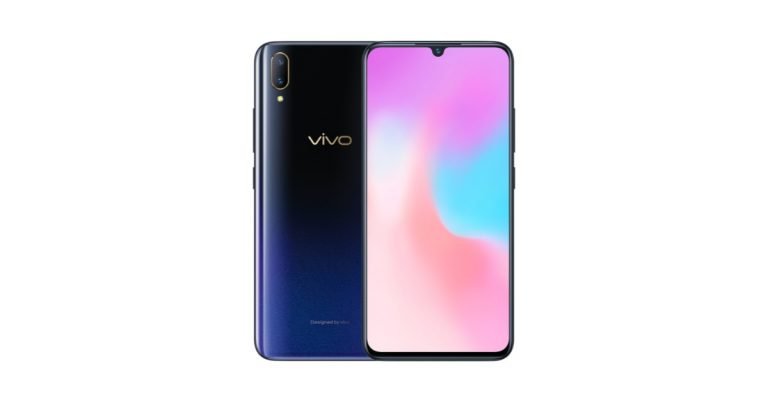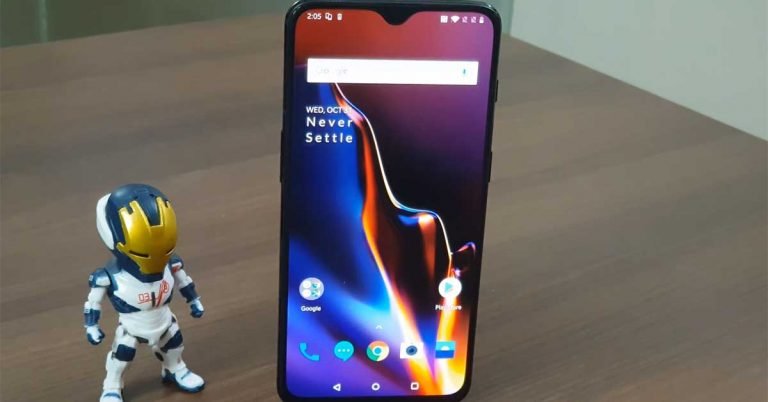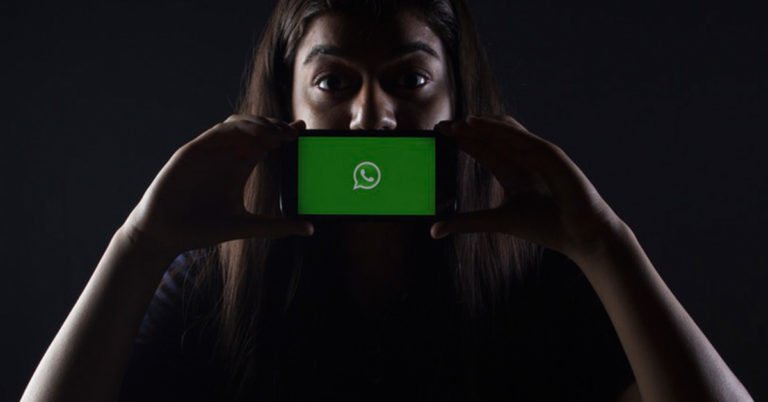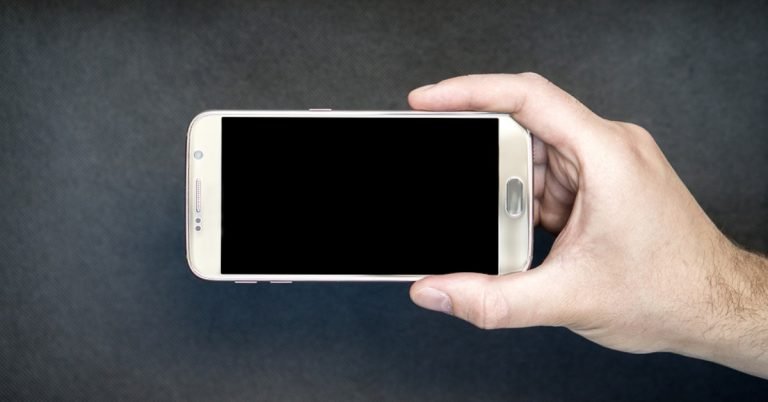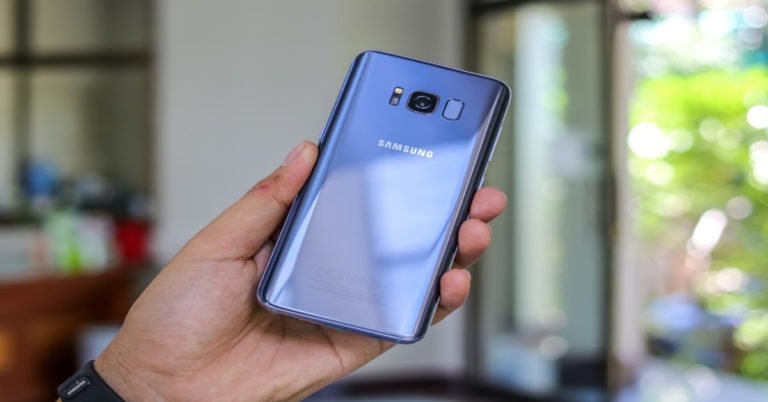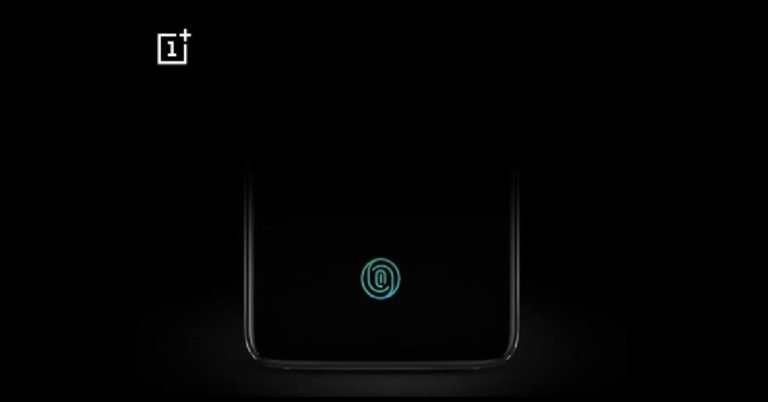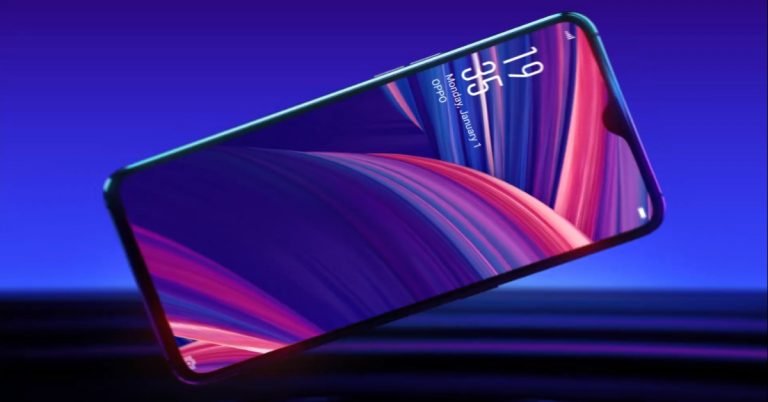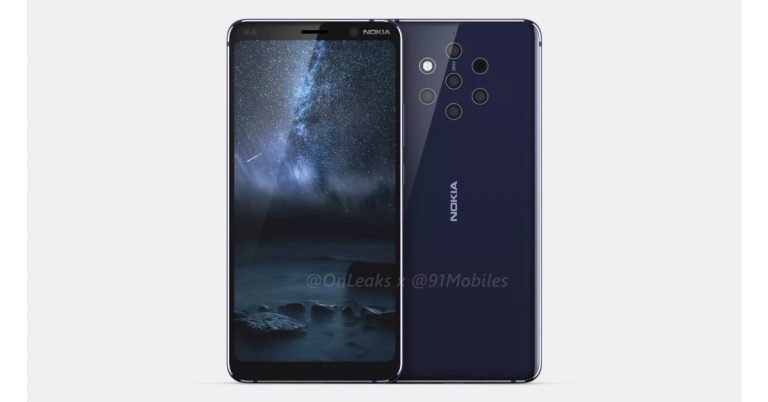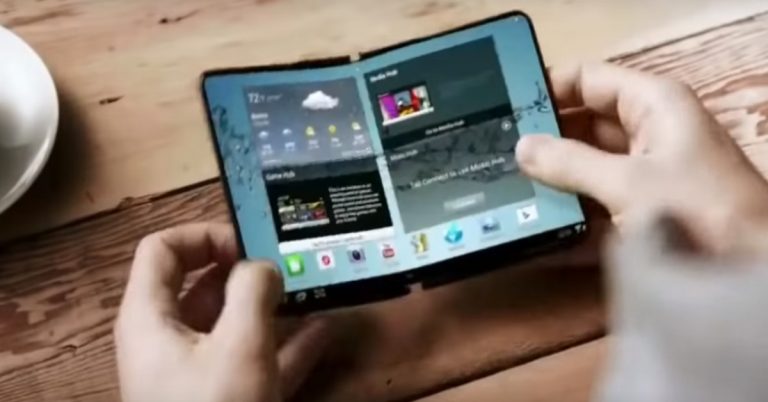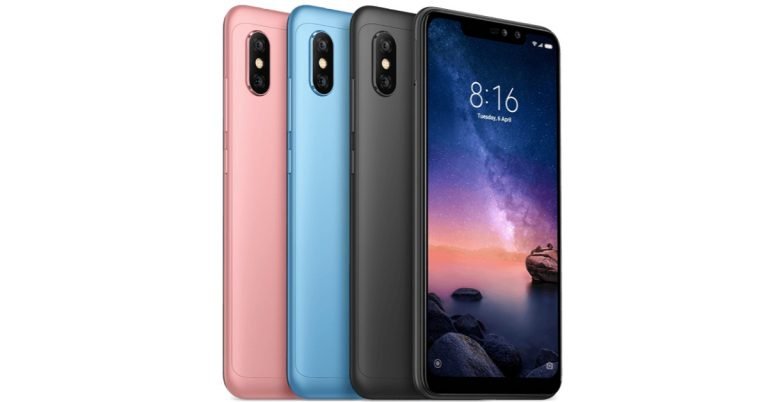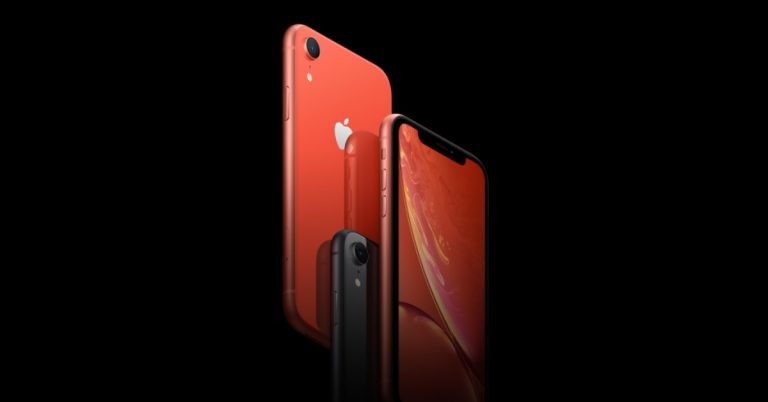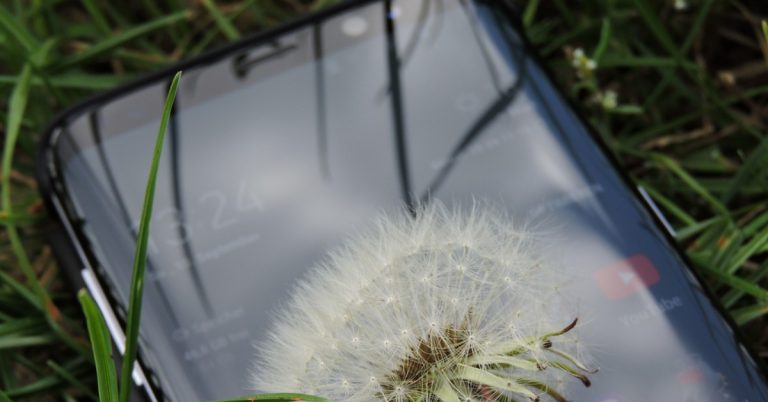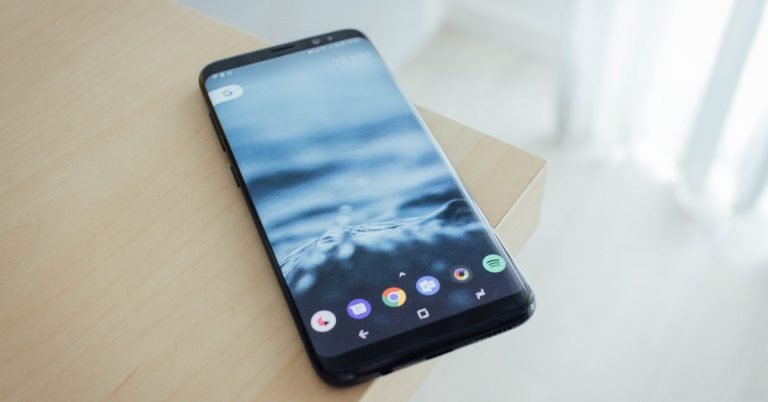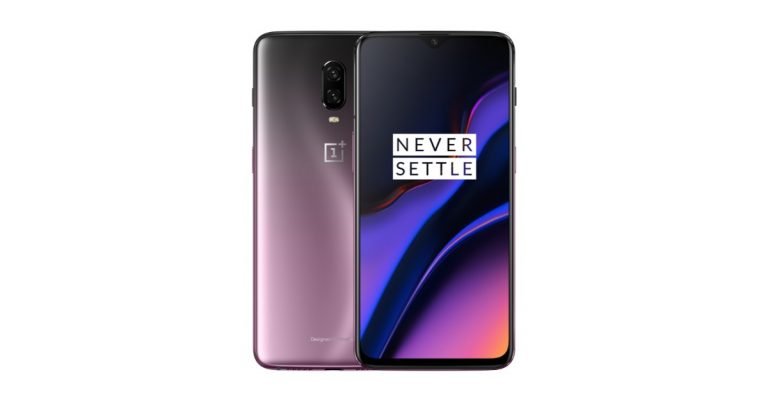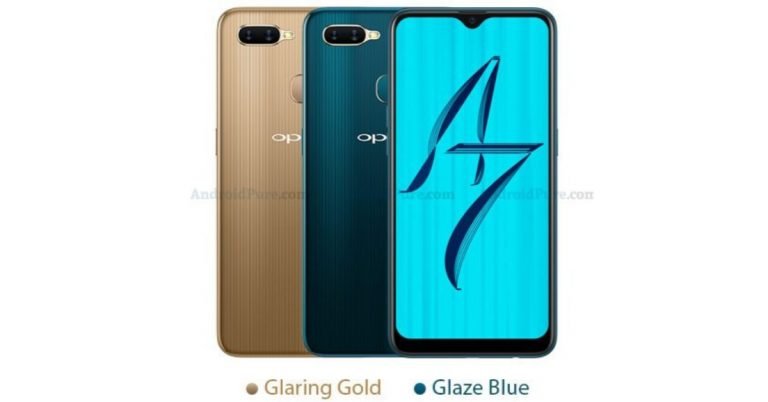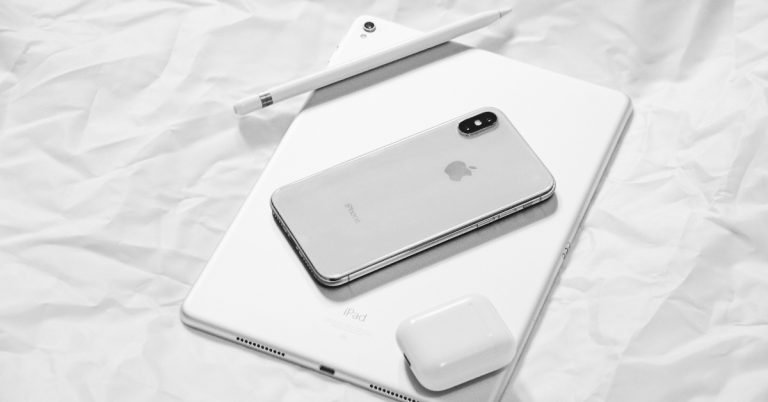[Video] This week in Tech: Episode 3 (November 5 – November 11)
This week saw some really exciting news from Samsung. We finally got to see the foldable phone by the South Korean technology giant. The week saw Oppo smartphones with fingerprint sensor got launched and OnePlus rolled out a new colour variant of OnePlus 6T. An important update is coming to Facebook and reports have surfaced online that suggest that Google is working on two mid-range Pixel smartphones. Get all the details in our episode of This Week In Tech.
For the latest gadget and tech news, and gadget reviews, follow us on Twitter, Facebook and Instagram. For newest tech & gadget videos subscribe to our YouTube Channel.
How to recall a sent email in Gmail
Did you just send out an email to your potential employer with an error that will surely spoil your first impression? Or did you inadvertently send an email to your boss that was meant for someone else? These situations can be embarrassing and can often put people in a place they would rather not be in.
We have all done this at some point in our lives. We have all been in a situation where we notice an unacceptable error only after hitting the dreadful ‘Send’ button.
But then, it’s not exactly something you need to worry about. There is a way you can save yourself from embarrassment the next time something like this happens. But even then, you must be quick as Gmail originally gives users 5 seconds to recall a sent email, but we can tell you how to extend that time up to 30 seconds.
But first let’s talk about what you can do to recall a sent email. You must have noticed that each time you send an email a box appears to notify that the email has been sent. If you use the old version of Gmail, then it would appear on the top, and if you have upgraded to the revamped version, it would appear on bottom left.
Right after you send the email this box will show you an option of ‘Undo’. You must click it within five seconds of sending the email in order to recall it.
But let’s face it. Five seconds are not always enough. Actually, it only works if you change your mind about sending the email the second you hit ‘Send’. And how many times does that happen?
So, if you think you would like to have an option of recalling emails on Google‘s popular email service even after five seconds are over, then here’s what you need to do:
- Go to the gear icon on top right of the email page.
- Scroll down to ‘Settings’.
- Go down in ‘General Settings’ to ‘Undo Send.’
- You would see a drop-box next to ‘Undo Send’ where the default option of 5 seconds would be selected.
- Click on the arrow on the drop-box to select options that are more than 5 seconds. These include 10, 20 and 30 seconds.
- Scroll down after selecting the option of your choice and press ‘Save Changes.’
Vivo X21s with in-display fingerprint scanner launched: Price and specifications
Chinese smartphone maker Vivo has launched its X21s smartphone that comes with an in-display fingerprint sensor. The Vivo X21s smartphone has been launched silently in China. In-display fingerprint sensors are mostly found in high-end smartphones. But with Vivo X21s and Vivo V11 Pro, the company has got the feature to smartphones that are in the affordable segment.
Speaking of Vivo V11 Pro, on paper, the two smartphones seem very similar. Other than an on-screen in-display sensor, the smartphone also comes with a bezel-less display, a waterdrop-shaped notch and Snapdragon 660 processor.
In This Article
Vivo X21s price and availability
Vivo X21s comes in only one variant that comes with 6GB of RAM and 128GB of internal storage. The smartphone is priced at CNY 2,498 and is now available in China via Vivo’s online store. The smartphone is available only in Starry Night Black colour option.Vivo X21s specifications
The new smartphone by Vivo has a dual SIM functionality and features a 6.41-inch full-HD+ Super AMOLED display panel. The display has an aspect ratio of 19.5:9 and the smartphones comes with a screen-to-body ratio of 91.2%. Powered by an octa-core Qualcomm Snapdragon 660 processor, VivoX21s mobile comes with 6GB of RAM and 128GB of onboard storage. If you still think you need more storage, you can add a microSD card of up to 256GB. For imaging duties, Vivo X21s smartphone comes with a dual rear camera setup with 12MP and 5MP sensors. The dual rear cameras of the smartphone come with autofocus and a monochrome flash. The Chinese smartphone maker has always been known for making smartphones that can click great selfies. And the company has made sure that its Vivo X21s smartphone is no exception. The smartphone sports a 24.8MP selfie camera that has support for Augmented Reality and face recognition technology. The newly launched Vivo X21s runs Android 8.1 Oreo out-of-the-box and houses a 3,400mAh battery. Connectivity options of the smartphone include 4G LTE, Wi-Fi, Bluetooth, GPS, GLONASS, a Micro-USB port, and a 3.5mm headphone jack. The sensors of the smartphone include accelerometer, ambient light sensor, electronic compass, gyroscope, and proximity sensor. For the latest gadget and tech news, and gadget reviews, follow us on Twitter, Facebook and Instagram. For newest tech & gadget videos subscribe to our YouTube Channel.This is what OnePlus 6T teardown reveals about its in-display fingerprint scanner
OnePlus 6T is the first smartphone by the Chinese smartphone company to sport an in-display fingerprint sensor, which also seems to be the latest trend in the smartphone industry. A number of phones have launched this year with the relatively new biometric technology and a number of smartphones are rumoured to follow the trend in the months to come.
Amid all this, JerryRigEverything has performed a complete teardown of OnePlus 6T smartphone to show viewers all the internal components if the device. And of course, the highlight of the teardown is the in-display fingerprint sensor of the mobile, which is actually a camera sensor that has been designed to light up when the phone is being operated.
The video starts with Zack removing the back panel of the smartphone and then dismantling the battery unit of the device. Then the video shows him removing the black plastic panel that has the NFC chip, which is followed by the dual rear cameras. On removal of dual rear cameras, we can see the presence of OIS on the primary sensor of the newly launched Android smartphone.
After that, we can wee the protective plastic case over the fingerprint scanner being removed. The in-display fingerprint scanner lies right above the charging port. Zack then takes the fingerprint sensor out and it is shown that it has a camera lens and a sensor. So it basically works by taking a close-up photo of your fingerprint and uses illuminators on the screen of the smartphone to record the image for unlocking the device in future.
After all this, the video shows the smartphone being turned on without the fingerprint sensor. Although the screen worked, but it doesn’t shine backwards. According to Zack, “The LEDs in the screen only shine in one direction – outwards.”
To recall, OnePlus announced prior to the launch of OnePlus 6T that the device uses an optical fingerprint sensor rather than an ultrasonic one, which uses sound to record the ridges and pores on the user’s fingerprint. While ultrasonic fingerprint sensors are supposed to be more accurate, optical ones are said to be faster. Oppo and Vivo, which are also owned by OnePlus’ parent company BBK ELectronics, also use an optical fingerprint sensor in their smartphones.
For the latest gadget and tech news, and gadget reviews, follow us on Twitter, Facebook and Instagram. For newest tech & gadget videos subscribe to our YouTube Channel.
OnePlus 6T Review: Better than before
Let’s face it OnePlus has made a mark in the industry and is one of the fastest selling smartphone brands in India. The company also has the biggest fan following and much of it is loyal. The fan base has been made on an excellent program of invitation only purchase, which worked wonderfully. The tradition continues to linger on, though not on the smartphones but on some of the products like the latest OnePlus backpack. The newest smartphone to come from the firm is the OnePlus 6T that has both – beauty and brains. We tested out the device for a while to understand what makes it tick. This is our review of the OnePlus 6T.
 As for the other aesthetics, the power and the ringer button are on the right, and the volume rocker button along with the 4G ready SIM card tray is placed on the left. The bottom part has the MIC and loudspeaker grille along with the USB type C charging port. Flip the phone around and you are greeted by a seen before Mirror Black rear panel, which still is a smudge magnet. However, we are not deducting points here as most smartphones in the category are a fingerprint attractor. The twin cameras also play house on the rear panel with the dual tone LED flash and OnePlus branding under it. The back panel is curved and pushes into the sides, which enabled us to grip the smartphone better.
Coming back to the display the screen is great as one can be. We played a lot of YouTube videos and games on it and not once did we feel the display going out of sync or loosing sharpness. HD videos ran really well on it and we were quite happy with the results. The reduced notch did allow us to enjoy videos better since the it does not get too much from the side where the notch is placed.
As for the other aesthetics, the power and the ringer button are on the right, and the volume rocker button along with the 4G ready SIM card tray is placed on the left. The bottom part has the MIC and loudspeaker grille along with the USB type C charging port. Flip the phone around and you are greeted by a seen before Mirror Black rear panel, which still is a smudge magnet. However, we are not deducting points here as most smartphones in the category are a fingerprint attractor. The twin cameras also play house on the rear panel with the dual tone LED flash and OnePlus branding under it. The back panel is curved and pushes into the sides, which enabled us to grip the smartphone better.
Coming back to the display the screen is great as one can be. We played a lot of YouTube videos and games on it and not once did we feel the display going out of sync or loosing sharpness. HD videos ran really well on it and we were quite happy with the results. The reduced notch did allow us to enjoy videos better since the it does not get too much from the side where the notch is placed.
 Moving on to the cameras, there are few upgrades now available to the system. Let’s start with the rear cameras first. Powered by a 16 MP + 20 MP sensor array, which has an aperture size of 1.7. The cameras now are able to take better pictures in low light and night thanks to the Nightscape mode. We found the picture sharpness to be much better than the OnePlus 6 on this smartphone, when clicking at night. For really dark places, we suggest to keep the flash on, which will get you even better sharpness when capturing humans or nearby objects. Studio light mode has been added too, to the OnePlus 6T which does a job of highlighting the subjects face in the images.
The selfie camera has been shifted to the middle of the screen, which makes it slightly better to take photographs with. Powered by a 20MP sensor with aperture size of 2.0, auto HDR is available on the front camera, just like it is available on the rear ones. Sadly, the night mode is not available here, which we were hoping to see, as the night bird in us would have loved to take selfies using that. Nevertheless, the front camera does a good job when it comes to day and low light selfies. Though at night you do see a bit of colour loss and pixelated edges in the photos, but nothing to be ashamed of.
Moving on to the cameras, there are few upgrades now available to the system. Let’s start with the rear cameras first. Powered by a 16 MP + 20 MP sensor array, which has an aperture size of 1.7. The cameras now are able to take better pictures in low light and night thanks to the Nightscape mode. We found the picture sharpness to be much better than the OnePlus 6 on this smartphone, when clicking at night. For really dark places, we suggest to keep the flash on, which will get you even better sharpness when capturing humans or nearby objects. Studio light mode has been added too, to the OnePlus 6T which does a job of highlighting the subjects face in the images.
The selfie camera has been shifted to the middle of the screen, which makes it slightly better to take photographs with. Powered by a 20MP sensor with aperture size of 2.0, auto HDR is available on the front camera, just like it is available on the rear ones. Sadly, the night mode is not available here, which we were hoping to see, as the night bird in us would have loved to take selfies using that. Nevertheless, the front camera does a good job when it comes to day and low light selfies. Though at night you do see a bit of colour loss and pixelated edges in the photos, but nothing to be ashamed of. When it comes to gaming and running power hungry apps on the OnePlus 6T, this smartphone is one of the best on the Android platform. We ran games like Asphalt 9 on it and boy-o-boy did it play well. The smartphone did warm up a little during this time. The sound experience is also nice just like what we heard on the OnePlus 6. The thuds and thumps are clear on the loudspeaker, however the resonance is even better on the USB type C OnePlus earphones (sold separately).
So, you might want to pick one of those in case you like watching Netflix shows or lot of YouTube videos on your mobile. In case you have a 3.5mm headphone you can still use them with this mobile. Since the OnePlus 6T does not come with a 3.5mm audio port the company does supply its customers with a USB type C to 3.5mm adaptor in the box.
OnePlus 6T has also seen a battery bump. It is now at 3,700 mAh. This extra bit makes it last for even longer than a day. And our usual day consists of light gaming, a lot of phone calls, YouTube videos et al. All of it on a 4G networks with WiFi enabled. For us it lasted for more than 24 hours and in most cases we were not charging it at night, but fast charging it with the supplied charger and cable in the morning. So, 80-85percetn charge was good enough for it to last till the next morning and more. We found the call quality on the OnePlus 6T to be much better than what it was on OnePlus 6. It is louder and crisper. Same is the case when talking using the loudspeaker.
Other features of the OnePlus 6T include WiFi 802.11 a/b/g/n/ac, Bluetooth 5.0. A-GPS, Adreno 630 GPU, 4K video recording (which comes out to be very close to life during the day time), NFC, Gyro and proximity sensors. On the assessment bench the OnePlus 6T got 8,922 points on Geekbench 4 multicore CPU test and 14,077 points on its compute test. Both indicating high-end performance.
When it comes to gaming and running power hungry apps on the OnePlus 6T, this smartphone is one of the best on the Android platform. We ran games like Asphalt 9 on it and boy-o-boy did it play well. The smartphone did warm up a little during this time. The sound experience is also nice just like what we heard on the OnePlus 6. The thuds and thumps are clear on the loudspeaker, however the resonance is even better on the USB type C OnePlus earphones (sold separately).
So, you might want to pick one of those in case you like watching Netflix shows or lot of YouTube videos on your mobile. In case you have a 3.5mm headphone you can still use them with this mobile. Since the OnePlus 6T does not come with a 3.5mm audio port the company does supply its customers with a USB type C to 3.5mm adaptor in the box.
OnePlus 6T has also seen a battery bump. It is now at 3,700 mAh. This extra bit makes it last for even longer than a day. And our usual day consists of light gaming, a lot of phone calls, YouTube videos et al. All of it on a 4G networks with WiFi enabled. For us it lasted for more than 24 hours and in most cases we were not charging it at night, but fast charging it with the supplied charger and cable in the morning. So, 80-85percetn charge was good enough for it to last till the next morning and more. We found the call quality on the OnePlus 6T to be much better than what it was on OnePlus 6. It is louder and crisper. Same is the case when talking using the loudspeaker.
Other features of the OnePlus 6T include WiFi 802.11 a/b/g/n/ac, Bluetooth 5.0. A-GPS, Adreno 630 GPU, 4K video recording (which comes out to be very close to life during the day time), NFC, Gyro and proximity sensors. On the assessment bench the OnePlus 6T got 8,922 points on Geekbench 4 multicore CPU test and 14,077 points on its compute test. Both indicating high-end performance.
In This Article
OnePlus 6T’s Design and Display
The “T” version of any OnePlus smartphone is mostly a facelift version of the actual form. But that is not the case with the OnePlus 6T. Yes, it does come in the Midnight Black and Mirror black colour options, but it has its own distinct features that sets it apart. For starters, the OnePlus 6T has a 6.41-inch optic AMOLED display with 19.5:9 aspect ratio, supporting screen resolution of 1,080×2,340 pixels. Corning Gorilla Glass 6 is on top of it for that much needed protection. The notch has been narrowed down to a waterdrop design and the ear speaker has been moved to the extreme top part of the smartphone. The chin has been reduced and overall the display does seem be edge to edge (well, almost). The fingerprint reader has also been moved from the back and placed on the front. It is located under the touchscreen’s bottom part and is quite delightful to work with, especially after the new update they rolled out a day ago. Setting it up was also child’s play. IT comes with three different animations too, so that user always known where he/she is pressing. As for the other aesthetics, the power and the ringer button are on the right, and the volume rocker button along with the 4G ready SIM card tray is placed on the left. The bottom part has the MIC and loudspeaker grille along with the USB type C charging port. Flip the phone around and you are greeted by a seen before Mirror Black rear panel, which still is a smudge magnet. However, we are not deducting points here as most smartphones in the category are a fingerprint attractor. The twin cameras also play house on the rear panel with the dual tone LED flash and OnePlus branding under it. The back panel is curved and pushes into the sides, which enabled us to grip the smartphone better.
Coming back to the display the screen is great as one can be. We played a lot of YouTube videos and games on it and not once did we feel the display going out of sync or loosing sharpness. HD videos ran really well on it and we were quite happy with the results. The reduced notch did allow us to enjoy videos better since the it does not get too much from the side where the notch is placed.
As for the other aesthetics, the power and the ringer button are on the right, and the volume rocker button along with the 4G ready SIM card tray is placed on the left. The bottom part has the MIC and loudspeaker grille along with the USB type C charging port. Flip the phone around and you are greeted by a seen before Mirror Black rear panel, which still is a smudge magnet. However, we are not deducting points here as most smartphones in the category are a fingerprint attractor. The twin cameras also play house on the rear panel with the dual tone LED flash and OnePlus branding under it. The back panel is curved and pushes into the sides, which enabled us to grip the smartphone better.
Coming back to the display the screen is great as one can be. We played a lot of YouTube videos and games on it and not once did we feel the display going out of sync or loosing sharpness. HD videos ran really well on it and we were quite happy with the results. The reduced notch did allow us to enjoy videos better since the it does not get too much from the side where the notch is placed.
OnePlus 6T’s Performance, Cameras and Other Features
Under the bonnet the OnePlus 6T is not a significant upgrade, but does give the users what is needed from a premium smartphone. The performance is now slightly better as this smartphone comes with Android P right out of the box with the latest Oxygen OS on top. Incredibly the OS layer on top of the Android P does not slow it down and keeps everything smooth. It is a lovely UI experience on the OnePlus 6T as not once did the system lag on any of the homescreens or when we quickly drew the app drawer. The animations are smooth and apps open in a jiffy. Yes, the OS does come with its set of bloatware, but nothing you cannot get rid of swiftly. Overall, the smartphone uses the new Android OS to its full potential. Above that, the users get OS upgrades for the next two years and security updates for three years. Inside, the OnePlus 6T is powered by the same chipset combo you get on the OnePlus 6. The 6T comes with Qualcomm Snapdragon 845 quadcore chipset, too. The users have three RAM and storage combinations to choose from. These include 6GB RAM/128GB storage, 8GB RAM/128GB storage and 8GB RAM/256GB storage options. The one that came to us for review was the 8GB RAM with 128GB storage version. Which we felt is the right combination. You get good amount of RAM for everyday processes and the right amount of storing capacity to go with it. Moving on to the cameras, there are few upgrades now available to the system. Let’s start with the rear cameras first. Powered by a 16 MP + 20 MP sensor array, which has an aperture size of 1.7. The cameras now are able to take better pictures in low light and night thanks to the Nightscape mode. We found the picture sharpness to be much better than the OnePlus 6 on this smartphone, when clicking at night. For really dark places, we suggest to keep the flash on, which will get you even better sharpness when capturing humans or nearby objects. Studio light mode has been added too, to the OnePlus 6T which does a job of highlighting the subjects face in the images.
The selfie camera has been shifted to the middle of the screen, which makes it slightly better to take photographs with. Powered by a 20MP sensor with aperture size of 2.0, auto HDR is available on the front camera, just like it is available on the rear ones. Sadly, the night mode is not available here, which we were hoping to see, as the night bird in us would have loved to take selfies using that. Nevertheless, the front camera does a good job when it comes to day and low light selfies. Though at night you do see a bit of colour loss and pixelated edges in the photos, but nothing to be ashamed of.
Moving on to the cameras, there are few upgrades now available to the system. Let’s start with the rear cameras first. Powered by a 16 MP + 20 MP sensor array, which has an aperture size of 1.7. The cameras now are able to take better pictures in low light and night thanks to the Nightscape mode. We found the picture sharpness to be much better than the OnePlus 6 on this smartphone, when clicking at night. For really dark places, we suggest to keep the flash on, which will get you even better sharpness when capturing humans or nearby objects. Studio light mode has been added too, to the OnePlus 6T which does a job of highlighting the subjects face in the images.
The selfie camera has been shifted to the middle of the screen, which makes it slightly better to take photographs with. Powered by a 20MP sensor with aperture size of 2.0, auto HDR is available on the front camera, just like it is available on the rear ones. Sadly, the night mode is not available here, which we were hoping to see, as the night bird in us would have loved to take selfies using that. Nevertheless, the front camera does a good job when it comes to day and low light selfies. Though at night you do see a bit of colour loss and pixelated edges in the photos, but nothing to be ashamed of. When it comes to gaming and running power hungry apps on the OnePlus 6T, this smartphone is one of the best on the Android platform. We ran games like Asphalt 9 on it and boy-o-boy did it play well. The smartphone did warm up a little during this time. The sound experience is also nice just like what we heard on the OnePlus 6. The thuds and thumps are clear on the loudspeaker, however the resonance is even better on the USB type C OnePlus earphones (sold separately).
So, you might want to pick one of those in case you like watching Netflix shows or lot of YouTube videos on your mobile. In case you have a 3.5mm headphone you can still use them with this mobile. Since the OnePlus 6T does not come with a 3.5mm audio port the company does supply its customers with a USB type C to 3.5mm adaptor in the box.
OnePlus 6T has also seen a battery bump. It is now at 3,700 mAh. This extra bit makes it last for even longer than a day. And our usual day consists of light gaming, a lot of phone calls, YouTube videos et al. All of it on a 4G networks with WiFi enabled. For us it lasted for more than 24 hours and in most cases we were not charging it at night, but fast charging it with the supplied charger and cable in the morning. So, 80-85percetn charge was good enough for it to last till the next morning and more. We found the call quality on the OnePlus 6T to be much better than what it was on OnePlus 6. It is louder and crisper. Same is the case when talking using the loudspeaker.
Other features of the OnePlus 6T include WiFi 802.11 a/b/g/n/ac, Bluetooth 5.0. A-GPS, Adreno 630 GPU, 4K video recording (which comes out to be very close to life during the day time), NFC, Gyro and proximity sensors. On the assessment bench the OnePlus 6T got 8,922 points on Geekbench 4 multicore CPU test and 14,077 points on its compute test. Both indicating high-end performance.
When it comes to gaming and running power hungry apps on the OnePlus 6T, this smartphone is one of the best on the Android platform. We ran games like Asphalt 9 on it and boy-o-boy did it play well. The smartphone did warm up a little during this time. The sound experience is also nice just like what we heard on the OnePlus 6. The thuds and thumps are clear on the loudspeaker, however the resonance is even better on the USB type C OnePlus earphones (sold separately).
So, you might want to pick one of those in case you like watching Netflix shows or lot of YouTube videos on your mobile. In case you have a 3.5mm headphone you can still use them with this mobile. Since the OnePlus 6T does not come with a 3.5mm audio port the company does supply its customers with a USB type C to 3.5mm adaptor in the box.
OnePlus 6T has also seen a battery bump. It is now at 3,700 mAh. This extra bit makes it last for even longer than a day. And our usual day consists of light gaming, a lot of phone calls, YouTube videos et al. All of it on a 4G networks with WiFi enabled. For us it lasted for more than 24 hours and in most cases we were not charging it at night, but fast charging it with the supplied charger and cable in the morning. So, 80-85percetn charge was good enough for it to last till the next morning and more. We found the call quality on the OnePlus 6T to be much better than what it was on OnePlus 6. It is louder and crisper. Same is the case when talking using the loudspeaker.
Other features of the OnePlus 6T include WiFi 802.11 a/b/g/n/ac, Bluetooth 5.0. A-GPS, Adreno 630 GPU, 4K video recording (which comes out to be very close to life during the day time), NFC, Gyro and proximity sensors. On the assessment bench the OnePlus 6T got 8,922 points on Geekbench 4 multicore CPU test and 14,077 points on its compute test. Both indicating high-end performance.
OnePlus 6T’s Verdict and Final Words
Transferring all our data from the OnePlus 6 to the OnePlus 6T was super easy. Just use the OnePlus switch app that is already available on it, select the things you want to transfer and within minutes you will be up and running on the new smartphone. Yes, some apps required downloading them again, but the rest of the data was intact. We had a gala time with the cameras as well, especially in the night. But, what troubled us the most is the price bracket OnePlus is taking its new version of smartphones to. They are now playing in the 45k – 60K category where they will be up against big players likes Samsung and Apple. We still feel that the sub-40K market is best for OnePlus. However, times do change quickly. Will it still be the highest selling premium smartphone in India? We shall get to know in a quarters time. All in all, if you can spend a little over 40K and are looking for good cameras and excellent performance from an Android smartphone then the 8GB RAM with 128GB version of OnePlus 6T at Rs 41,999 will do you right. Pros: Good Cameras Longer Battery Life Larger display with better body to screen ratio Cons: Price might pinch some No 3.5mm audio port For the latest gadget and tech news, and gadget reviews, follow us on Twitter, Facebook and Instagram. For newest tech & gadget videos subscribe to our YouTube Channel.How to create your own stickers for WhatsApp
With stickers finally making their way to WhatsApp, conversations on the instant messaging app have surely become more fun. The Facebook owned messenger now allows users to share stickers with their friends, in addition to emojis and GIFs that were already present on the platform.
When stickers came to WhatsApp, there were twelve packs of stickers available for free for users. In addition to this, users had the option of downloading other stickers from Play Store. And this particularly became hit during Diwali when a Diwali sticker pack for WhatsApp was rolled out on Google Play Store and a great number of users downloaded it to wish their loved ones in a new way.
There are a number of third party apps that offer various kinds of stickers for WhatsApp. When we went to look for the some that we wanted, we found Game of Thrones-themed stickers, but surprisingly, no Harry Potter themed sticker pack was available. We thought we would have to wait till someone rolls it out.
But luckily, we don’t have to. There is an app on Google Play Store called Sticker maker for WhatsApp, using which you can create any sticker of your choice and send it to your friends on the popular messaging app. Here is a step by step guide on how you can make your own stickers on WhatsApp:
- Go to Google Play Store and download Sticker maker for WhatsApp.
- Open the app and select ‘Create a new stickerpack’.
- You will be asked to sill in the name of sticker pack along with the name of the author creating it.
- Now, the sticker pack will start appearing with its name along with ‘Not Published’ written underneath it.
- On pressing on the sticker pack’s name, you will be taken to a new page where tray icons would appear.
- Press on the tray icon and then select if you want to take a photo to make the sticker or you wish to upload one.
- Grant the permissions the app asks for and upload the photo of your choice.
- Once the image is uploaded, you will be asked to draw an outline around the area you want in your sticker.
- Tap on ‘Yes, Save Sticker’ or ‘No, Try Again’ once you finish outlining. If you are happy with the area covered, select the former, if you want to give it another go press the latter.
- You will have to create a minimum of three and a maximum of 30 stickers in one pack.
- Publish the sticker pack once you are done.
- A message would then prompt asking you if you want to add the sticker pack to WhatsApp. Press ‘Add’ to start sharing these stickers on WhatsApp with your friends.
Google’s dark mode can prolong your Android smartphone’s battery life
It has been a known fact that enabling the dark mode is an easy way to enhance the battery life of smartphones that sport an OLED screen. And it’s not something that works exclusively with only Android smartphones or iPhones. The case is the same with both. The reason behind this is that on dark areas of the screen, individual pixels have to do much less work and they use almost no battery while displaying true black on the smartphone’s screen.
According to Slashgear, this was reinforced by Google during its Android Dev Summit this week. The technology giant showed a number of slides comparing how much battery is used to display different colours. To get these data points, Google used its Pixel smartphone.
According to the chart shared by Google, Black used the least amount of juice, followed by Red, Green, Blue and White. White towers over all the other colours and used the most power.
 With this, Google realised that having white as the most prominent theme colour across its apps is not a very good idea. Even in Google’s revamped Material Design, white colour is practically everywhere.
But on the upside, Google does realize the importance of Dark mode. The company has already rolled out the theme to YouTube and Android Messages and Google will be getting it to its Phone app. The technology giant is also testing the feature in the mobile Google Feed.
As of now, Android users can set a dark theme for quick settings and app drawer, but a system-wide night mode is not available yet.
With this, Google realised that having white as the most prominent theme colour across its apps is not a very good idea. Even in Google’s revamped Material Design, white colour is practically everywhere.
But on the upside, Google does realize the importance of Dark mode. The company has already rolled out the theme to YouTube and Android Messages and Google will be getting it to its Phone app. The technology giant is also testing the feature in the mobile Google Feed.
As of now, Android users can set a dark theme for quick settings and app drawer, but a system-wide night mode is not available yet.
 Another chart that shows the difference between dark mode and normal mode on YouTube has been shared by Google. At 100% brightness, the difference between the battery used by the two modes is 60%. If one can save that much battery of their device by just switching to Dark Mode, we recommend you to do it right away.
Moreover, the Dark Mode is said to be better for our eyes too and we personally felt a lot less strain on our eyes when we first enabled it on our YouTube app. So it’s definitely worth a shot for anyone using an Android device.
Image courtesy: Slashgear
For the latest gadget and tech news, and gadget reviews, follow us on Twitter, Facebook and Instagram. For newest tech & gadget videos subscribe to our YouTube Channel.
Another chart that shows the difference between dark mode and normal mode on YouTube has been shared by Google. At 100% brightness, the difference between the battery used by the two modes is 60%. If one can save that much battery of their device by just switching to Dark Mode, we recommend you to do it right away.
Moreover, the Dark Mode is said to be better for our eyes too and we personally felt a lot less strain on our eyes when we first enabled it on our YouTube app. So it’s definitely worth a shot for anyone using an Android device.
Image courtesy: Slashgear
For the latest gadget and tech news, and gadget reviews, follow us on Twitter, Facebook and Instagram. For newest tech & gadget videos subscribe to our YouTube Channel.
 With this, Google realised that having white as the most prominent theme colour across its apps is not a very good idea. Even in Google’s revamped Material Design, white colour is practically everywhere.
But on the upside, Google does realize the importance of Dark mode. The company has already rolled out the theme to YouTube and Android Messages and Google will be getting it to its Phone app. The technology giant is also testing the feature in the mobile Google Feed.
As of now, Android users can set a dark theme for quick settings and app drawer, but a system-wide night mode is not available yet.
With this, Google realised that having white as the most prominent theme colour across its apps is not a very good idea. Even in Google’s revamped Material Design, white colour is practically everywhere.
But on the upside, Google does realize the importance of Dark mode. The company has already rolled out the theme to YouTube and Android Messages and Google will be getting it to its Phone app. The technology giant is also testing the feature in the mobile Google Feed.
As of now, Android users can set a dark theme for quick settings and app drawer, but a system-wide night mode is not available yet.
 Another chart that shows the difference between dark mode and normal mode on YouTube has been shared by Google. At 100% brightness, the difference between the battery used by the two modes is 60%. If one can save that much battery of their device by just switching to Dark Mode, we recommend you to do it right away.
Moreover, the Dark Mode is said to be better for our eyes too and we personally felt a lot less strain on our eyes when we first enabled it on our YouTube app. So it’s definitely worth a shot for anyone using an Android device.
Image courtesy: Slashgear
For the latest gadget and tech news, and gadget reviews, follow us on Twitter, Facebook and Instagram. For newest tech & gadget videos subscribe to our YouTube Channel.
Another chart that shows the difference between dark mode and normal mode on YouTube has been shared by Google. At 100% brightness, the difference between the battery used by the two modes is 60%. If one can save that much battery of their device by just switching to Dark Mode, we recommend you to do it right away.
Moreover, the Dark Mode is said to be better for our eyes too and we personally felt a lot less strain on our eyes when we first enabled it on our YouTube app. So it’s definitely worth a shot for anyone using an Android device.
Image courtesy: Slashgear
For the latest gadget and tech news, and gadget reviews, follow us on Twitter, Facebook and Instagram. For newest tech & gadget videos subscribe to our YouTube Channel. These Samsung flagship smartphones would not receive Android Pie-Based One UI update
Samsung unveiled its brand new UI when it introduced the world to its much talked about foldable phone. Although Samsung Galaxy S9, Galaxy S9+, and Galaxy Note 9 will be getting updated to Android Pie based One UI next year, reports have suggested that the company has no plans of rolling out the update to Galaxy S8, Galaxy S8+ and Galaxy Note 8.
The South Korean technology giant’s flagships from last year are running Samsung Experience UX and don’t have support for one-handed features that will come to devices with One UI.
According to a report in Tom Guide, it has been confirmed by Samsung that its Galaxy S8, Galaxy S8+, and Galaxy Note 8 will “miss out” on the One UI experience. However, at Samsung Developer Conference 2018, the company announced that Android Pie-based One UI would come to Galaxy S9, Galaxy S9+ and Galaxy Note 9 smartphones. It also said that users should expect to get the update by January next year.
An open beta programme for the update would begin this month itself in the United States, Germany and Samsung’s home country South Korea. These will be followed by countries in Europe and Asia.
One UI by Samsung is supposed to deliver a “more natural and comfortable” one-handed user experience than the one that is currently available on Samsung Experience UX. With One UI, Samsung has transformed the upper part of the display for viewing and the lower part of it has been dedicated to touch interaction. One UI has also rearranged the options in Settings to provide relative functions together and tabs on pre-installed apps have been made more accessible by moving them from top to bottom.
According to Samsung, the main aim of the new interface is to provide a less cluttered experience than the one available right now. As of now, there is no clarity on whether Samsung’s last year flagship smartphones — Galaxy S8, Galaxy S8+ and Galaxy Note 8 — would receive an Android 9.0 Pie update with Samsung Experience UX. They were initially launched with Android Nougat with Samsung Experience UX baked on top and all three have got an update for Android Oreo.
For the latest gadget and tech news, and gadget reviews, follow us on Twitter, Facebook and Instagram. For newest tech & gadget videos subscribe to our YouTube Channel.
Google working on two-mid-range Pixel smartphones: Report
Technology giant Google is reportedly planning to add two more smartphones to its Pixel lineup. And this time, the smartphones will not be in the high-end range. Instead, Google will be releasing these devices in the mid-range segment.
But then, this is not the first time that reports of such a phone by Google have surfaced online. It was earlier reported in June this year that Google is working on a mid-range Pixel smartphone, when a phone codenamed Bonito powered by Snapdragon 710 got spotted. Although we are yet to hear from Google regarding its mid-range Pixel phone, a report has surfaced online which points towards the technology giant working on a device in the said range.
The codename Bonito that we mentioned earlier has been spotted again. And this time, it was found in the code of the latest ARCore APK. There was no other information about the device that was available.
However, it is worth noticing that the codename Bonito was found alongside another codename, Sargo.
Although there is no guarantee on the fact that these devices are made by Google, the fish related names do suggest that they are.
Google usually launches its smartphones every year in two sizes, and that further points towards Bonito and Sargo being devices made by the technology company. It is being speculated that Sargo is the smaller version of the two and Bonito will be the high-end one. However, we can’t agree or disagree with that till more details about the upcoming smartphones surface.
Since we don’t know much about the devices, we obviously don’t know about their release date too. But a recent rumour claimed that Google will unveil its mid-range smartphones in early 2019.
To recall, before Google’s Pixels series came into being, the company sold smartphones from the Nexus series that were comparatively affordable. The devices in the Nexus series offers the same clutter-free Android experience that Google Pixel smartphones do.
But with Pixel series, an entirely new market was targeted by Google, as their pricing and specifications made them compete with flagships from Apple and Google.
Now, with Bonito and Sargo, it seems like technology giant is planning to capture the Nexus audience, which it lost when it launched more high-end smartphones.
For the latest gadget and tech news, and gadget reviews, follow us on Twitter, Facebook and Instagram. For newest tech & gadget videos subscribe to our YouTube Channel.
Facebook Messenger will allow users to unsend messages within 10 minutes
If you use an iPhone, you may soon be able to unsend messages on Facebook Messenger. Till now, the unsend feature of Facebook Messenger was only available for a selected few, but soon, it will be rolling out to all.
But then, there is a catch. You must delete the message within 10 minutes of sending it. The sort time span that Facebook is giving its users makes WhatsApp’s 1-hour time span for deleting messages look so much better in comparison.
The change was first spotted by The Verge and it is reportedly listed as ‘coming soon’ in the release notes of Messenger for iOS version 1919.0.
Earlier this year in April, TechCrunch had reported that the social networking giant had secretly been deleting messages sent by Mark Zuckerberg and other Facebook executives from inboxes belonging to other people.
Facebook had said that it had taken certain steps to enhance corporate security post the Sony Pictures hack of 2014. But during the Cambridge Analytica scandal that happened this year, this admission only dented the company’s reputation further. After the demand for this feature grew, Facebook promised to roll it out to all.
However, there are still some questions that remain. For instance, will the company inform the recipient that a message sent to them has been retracted? We will have to wait for the feature to roll out to find out.
Popular messaging app WhatsApp, which is also owned by Facebook, got the feature to recall messages in October 2017. While earlier the time-limit to retract messages on WhatsApp was limited to 7 mins, it was later extended to 1 hour 8 minutes and 16 seconds.
However, it was recently reported that the feature on WhatsApp will soon be getting a ‘Recipient Limit.’
Post the update, a message sent on WhatsApp will only get deleted if revoke request reaches the recipient within 13 hours, 8 minutes and 16 seconds. So in case it doesn’t within the said period, maybe because the recipient’s phone is off or in no-network area, the sender would not be able to recall the message.
However, senders wouldn’t have to do anything extra for it and the entire process will happen at the back-end.
For the latest gadget and tech news, and gadget reviews, follow us on Twitter, Facebook and Instagram. For newest tech & gadget videos subscribe to our YouTube Channel.
This feature of OnePlus 6T sees improvement with OxygenOS 9.0.5 update
OnePlus has started rolling out the OxygenOS 9.0.5 update for its latest device OnePlus 6T. The update for OnePlus 6T is under 100MB and is stated to get two changes to the smartphone. The first is ‘General bug fixes and improvements’ and the second is ‘Improvements for Screen Unlock’.
We did download the update and we do think that it has made a difference to the screen unlock of OnePlus 6T. Earlier, we did face a lag at times before the smartphone would unlock with the in-display fingerprint sensor. But post the update, it is much quicker and it reads fingers of both our hands accurately. For us, the smartphone’s unlock started working better immediately.
It is worth noticing that OnePlus 6T uses the same in-display fingerprint scanner as Vivo and Oppo smartphones. This isn’t surprising as all three have the same parent company, BBK Electronics.
There are two kinds of in-display fingerprint scanners — ultrasonic and optical. OnePlus 6T, and devices from Oppo and Vivo, use the optical on-screen fingerprint sensor. Optical in-display fingerprint sensors are usually cheaper and less secure than ultrasonic on-screen fingerprint scanners. This is because they capture the fingerprint in the form of a 2D image, which is later used to analyse the prints on the finger. Ultrasonic fingerprint sensors, on the other hand, use ultrasound to create a 3D image of the user’s finger(s).
But then, on the upside, optical fingerprint sensors are supposed to be quicker than ultrasonic. Besides an in-display fingerprint sensor, OnePlus 6T mobile also comes with face unlock technology.
The update is now rolling out to all OnePlus 6T devices and users should have received a notification for the same.
Speaking of in-display fingerprint sensors, Samsung’s upcoming Galaxy S10 smartphone will also reportedly sport one. However, the South Korean technology giant has opted for an ultrasonic fingerprint scanner rather than an optical one.
According to reports, Samsung has dedicated 30% of Galaxy S10’s screen’s area for the fingerprint sensor, meaning that the user can place his finger anywhere in that area to unlock the device.
We already like the idea of so much screen being dedicated to the fingerprint scanner and we are looking forward to seeing how it actually works.
For the latest gadget and tech news, and gadget reviews, follow us on Twitter, Facebook and Instagram. For newest tech & gadget videos subscribe to our YouTube Channel.
Oppo RX17 Pro, RX17 Neo with in-display fingerprint sensor launched: Price and specifications
Oppo RX17 Pro and RX17 Neo smartphones have been launched in Europe. Both the smartphones sport a waterdrop-shaped notch, have a gradient shiny back and come with an in-display fingerprint sensor. Smartphones by Oppo and Vivo are known for their selfie cameras, and RX17 Pro and RX17 Neo are not exceptions. Both the smartphones house a 25MP AI front facing camera. Other specifications that are common between them include ColorOS 5.2 based on Android and a 6.4-inch display. The smartphones are rebranded versions of Oppo R17 Pro and R17 Neo that have been launched earlier in China and Japan. Let’s take a look at the specifctaions and the price of the device:
In This Article
Oppo RX17 Pro, Oppo RX17 Neo price and availability
While Oppo RX17 Pro comes with 6GB of RAM and 128GB of internal storage, Oppo RX17 Neo is available with 4GB of RAM and 128GB of internal storage. The former is priced at EUR 599, the latter costs EUR 349. The smartphones will be available in Italy, France, Spain, and the Netherlands starting November 16. Oppo RX17 Pro comes in Radiant Mist and Emerald Green colour options and the RX17 Neo is available in Mocha Red, and Astral Blue colours.Oppo RX17 Pro, Oppo RX17 Neo specifications
Now let’s talk about the specifications of the two devices. We’ll begin with Oppo Rx17 Pro that features a 6.4-inch full HD+ display that comes with an aspect ratio of 19:9 and is protected by Corning Gorilla Glass 6. The display of the smartphone houses an on-screen fingerprint sensor and sports a waterdrop-shaped notch on the top. The smartphone runs Android 8.1 Oreo skinned with ColorOS 5.2 and is powered by an octa-core Snapdragon 710 processor paired with adreno 616 GPU. The smartphone comes with 6GB of RAM and 128 of onboard storage. Oppo RX17 Pro sports a triple rear camera setup with a 12MP primary camera with f/1.5-2.4 variable aperture and optical image stabilization, a 20MP sensor with f/1.6 aperture and a Time of Flight 3D sensing camera. The rear cameras come with an LED flash. For selfies, there is a 25MP front facing snapper that comes with Sony IMX576 sensor and has an f/2.0 aperture. The selfie camera of the smartphone also has AI features. Oppo RX17 Pro mobile houses a 3,700mAh battery that supports SuperVOOC Flash Charge. With the said technology, the smartphone is claimed to charge from zero to 40% in 10 minutes. Connectivity options of the smartphone include Dual 4G VoLTE, Bluetooth v5, Wi-Fi, GPS, USB OTG, USB Type-C, NFC, and more. Speaking of Oppo RX17 Neo, it is powered by an octa-core Snapdragon 660 processor that is paired with Adreno 512 GPU. The smartphone comes with 4GB of RAMa= and has the same storage as Oppo RX17 Pro. The smartphone comes with 16MP+2MP rear cameras that come with f/1.75 aperture and f/2.4 aperture respectively. The smartphone packs a 3,600mAh battery. For the latest gadget and tech news, and gadget reviews, follow us on Twitter, Facebook and Instagram. For newest tech & gadget videos subscribe to our YouTube Channel.Nokia 9 leaked renders show a penta-camera setup and no fingerprint sensor
Among the most awaited phones from HMD Global is Nokia 9. And the company is just making fans longer for it as according to reports, Nokia 9 will not be unveiled this year. If you are waiting for it to launch, you will have to wait till MWC 2019.
But the rumour mill about the upcoming Nokia smartphone is still on. Although we did have an idea about what the device will look like thanks to images that have been leaked in the past, some new renders of Nokia 9 have leaked online. And the new renders, which come courtesy OnLeaks in collaboration with 91Mobiles, show the design of Nokia 9 from all angles.
 You can see the edge-to-edge display with thin bezels and no notch on top. According to reports, the upcoming Nokia device will sport a 5.9-inch QHD+ display that has an aspect ratio of 18:9.
Like Nokia 8 Sirocco (review), Nokia 9 smartphone will also come with a glass back panel. The glass on the back of Nokia 9 will curve around the edges of the device and since there is no physical fingerprint sensor on the device, the company may have replaced it with an in-display fingerprint scanner.
You can see the edge-to-edge display with thin bezels and no notch on top. According to reports, the upcoming Nokia device will sport a 5.9-inch QHD+ display that has an aspect ratio of 18:9.
Like Nokia 8 Sirocco (review), Nokia 9 smartphone will also come with a glass back panel. The glass on the back of Nokia 9 will curve around the edges of the device and since there is no physical fingerprint sensor on the device, the company may have replaced it with an in-display fingerprint scanner.
 But the key feature of Nokia 9 mobile is the penta-lens setup on the back panel. The upcoming device will be the first ever smartphone to come with five rear cameras, unless some other technology company launches a device with penta-lens setup before Nokia 9’s launch.
The renders show the cameras arranged in a hexagonal pattern at the back panel of Nokia 9 smartphone. However, there are seven cut-outs and not six, as one lies right in the centre of all the other lenses. Out of these seven, five are camera sensors, one is LED flash, and the last one is expected to be used for proximity detection.
But the key feature of Nokia 9 mobile is the penta-lens setup on the back panel. The upcoming device will be the first ever smartphone to come with five rear cameras, unless some other technology company launches a device with penta-lens setup before Nokia 9’s launch.
The renders show the cameras arranged in a hexagonal pattern at the back panel of Nokia 9 smartphone. However, there are seven cut-outs and not six, as one lies right in the centre of all the other lenses. Out of these seven, five are camera sensors, one is LED flash, and the last one is expected to be used for proximity detection.
 It is being said that HMD Global will be using Zeiss lenses and go for a Pureview branding. There are also reports that say that the phone will be called Nokia 9 PureView, but there are no official reports on it.
Nokia 9 will come with Android 9 Pie out of the box and will be powered by either Snapdragon 845 or 855 processor. Like most other Nokia smartphones that we have seen recently, Nokia 9 will be a part of Google’s Android One program. It is also rumoured to come with up to 8GB RAM, 128GB onboard storage and house a 4,150mAh battery.
Image courtesy: Onleaks, 91mobiles
For the latest gadget and tech news, and gadget reviews, follow us on Twitter, Facebook and Instagram. For newest tech & gadget videos subscribe to our YouTube Channel.
It is being said that HMD Global will be using Zeiss lenses and go for a Pureview branding. There are also reports that say that the phone will be called Nokia 9 PureView, but there are no official reports on it.
Nokia 9 will come with Android 9 Pie out of the box and will be powered by either Snapdragon 845 or 855 processor. Like most other Nokia smartphones that we have seen recently, Nokia 9 will be a part of Google’s Android One program. It is also rumoured to come with up to 8GB RAM, 128GB onboard storage and house a 4,150mAh battery.
Image courtesy: Onleaks, 91mobiles
For the latest gadget and tech news, and gadget reviews, follow us on Twitter, Facebook and Instagram. For newest tech & gadget videos subscribe to our YouTube Channel.
 You can see the edge-to-edge display with thin bezels and no notch on top. According to reports, the upcoming Nokia device will sport a 5.9-inch QHD+ display that has an aspect ratio of 18:9.
Like Nokia 8 Sirocco (review), Nokia 9 smartphone will also come with a glass back panel. The glass on the back of Nokia 9 will curve around the edges of the device and since there is no physical fingerprint sensor on the device, the company may have replaced it with an in-display fingerprint scanner.
You can see the edge-to-edge display with thin bezels and no notch on top. According to reports, the upcoming Nokia device will sport a 5.9-inch QHD+ display that has an aspect ratio of 18:9.
Like Nokia 8 Sirocco (review), Nokia 9 smartphone will also come with a glass back panel. The glass on the back of Nokia 9 will curve around the edges of the device and since there is no physical fingerprint sensor on the device, the company may have replaced it with an in-display fingerprint scanner.
 But the key feature of Nokia 9 mobile is the penta-lens setup on the back panel. The upcoming device will be the first ever smartphone to come with five rear cameras, unless some other technology company launches a device with penta-lens setup before Nokia 9’s launch.
The renders show the cameras arranged in a hexagonal pattern at the back panel of Nokia 9 smartphone. However, there are seven cut-outs and not six, as one lies right in the centre of all the other lenses. Out of these seven, five are camera sensors, one is LED flash, and the last one is expected to be used for proximity detection.
But the key feature of Nokia 9 mobile is the penta-lens setup on the back panel. The upcoming device will be the first ever smartphone to come with five rear cameras, unless some other technology company launches a device with penta-lens setup before Nokia 9’s launch.
The renders show the cameras arranged in a hexagonal pattern at the back panel of Nokia 9 smartphone. However, there are seven cut-outs and not six, as one lies right in the centre of all the other lenses. Out of these seven, five are camera sensors, one is LED flash, and the last one is expected to be used for proximity detection.
 It is being said that HMD Global will be using Zeiss lenses and go for a Pureview branding. There are also reports that say that the phone will be called Nokia 9 PureView, but there are no official reports on it.
Nokia 9 will come with Android 9 Pie out of the box and will be powered by either Snapdragon 845 or 855 processor. Like most other Nokia smartphones that we have seen recently, Nokia 9 will be a part of Google’s Android One program. It is also rumoured to come with up to 8GB RAM, 128GB onboard storage and house a 4,150mAh battery.
Image courtesy: Onleaks, 91mobiles
For the latest gadget and tech news, and gadget reviews, follow us on Twitter, Facebook and Instagram. For newest tech & gadget videos subscribe to our YouTube Channel.
It is being said that HMD Global will be using Zeiss lenses and go for a Pureview branding. There are also reports that say that the phone will be called Nokia 9 PureView, but there are no official reports on it.
Nokia 9 will come with Android 9 Pie out of the box and will be powered by either Snapdragon 845 or 855 processor. Like most other Nokia smartphones that we have seen recently, Nokia 9 will be a part of Google’s Android One program. It is also rumoured to come with up to 8GB RAM, 128GB onboard storage and house a 4,150mAh battery.
Image courtesy: Onleaks, 91mobiles
For the latest gadget and tech news, and gadget reviews, follow us on Twitter, Facebook and Instagram. For newest tech & gadget videos subscribe to our YouTube Channel. Samsung unveils its foldable phone with a new UI at its developer conference
After weeks of rumours and leaks, South Korean technology giant Samsung finally unveiled its foldable phone. The Samsung Developer Conference started yesterday, while there were reports that the company will only be showing the UI of the upcoming phone, it instead showcased the foldable tablet-sized device on the very first day itself.
Samsung’s tablet-sized device can be folded into a phone and the company calls it the Infinity Flex Display. Although the company did not talk too much about it, we now at least what actually Samsung’s foldable phone is like and that it will be made available to the masses.
Rumours suggest that Samsung plans to call its device as Galaxy F, but then, there is no official word on it yet. Samsung is being extremely careful about the information that it is disclosing about the device so far. It even went to the extent of dimming the lights and hiding the phone’s design during the presentation so that the audience could only see the display.
Speaking of the display, Samsung’s foldable phone has a 7.3-inch AMOLED screen that can be folded in the middle. The tablet then turns into a candybar phone. That’s not all. The device also has a 4.6-inch AMOLED secondary display that is placed on the outer cover and is visible when the device is folded. It comes handy when the device is being used as a phone and not a tablet.
Samsung said that the device has been designed to offer users a tablet and a smartphone in one device and further went on to say that the phone’s Infinity Flex Display is thin and can be folded “hundreds of thousands of times.”
Samsung has also come with a new interface called One UI, which can work when the device is being used as a tablet as well as when it is being used as a phone. According to the company, the minimalistic user interface of the phone is based on Android, and will show only useful content at the bottom of the screen. On unfolding the device, users get a lot of scope for multitasking as they can simultaneously run three apps on the tablet’s screen.
There is no official launch date of the device, but the new foldable device by Samsung is expected to be there at CES 2019.
For the latest gadget and tech news, and gadget reviews, follow us on Twitter, Facebook and Instagram. For newest tech & gadget videos subscribe to our YouTube Channel.
Samsung to showcase its foldable smartphone’s interface today: Report
Samsung’s developer conference is all set to begin today and the South Korean technology giant will be showcasing its foldable smartphone for the first time there. The company considers it important to get a feedback from developers on what can be the best way for apps to behave when the tablet unfolds. Or, in simpler words, how they should go from smartphone sized screen to a tablet sized screen.
Samsung’s VP of mobile communication has confirmed that the company will be showcasing the smartphone’s user interface at its developer conference. And another official from the company said that the images of the device will be revealed.
However, we may not get to the device at Samsung Developer Conference, as the company seems to be working on finalizing the design.
A source from Samsung who did not wish to be named, told Reuters, “Unlike our flagship products, the foldable phone is a completely new concept in terms of design and user experience, which requires a different approach.”
He further said, “Before we take it to the market, we want to share with developers what we’ve done so far and see what they think of it.”
The foldable smartphone by the company is currently being called Samsung Galaxy F and it is expected to launch early next year along with Samsung Galaxy S10 lineup. According to a report that surfaced earlier in The Wall Street Journal, Samsung’s foldable phone is around 7-inches diagonal when unfolded. The same report also disclosed that the upcoming smartphone has been codenamed ‘Winner’.
In an interview with Cnet, Samsung’s mobile division CEO DJ Koh said that the company’s foldable smartphone is not a “gimmick product” that disappears just six to nine months after being launched. He explained how it can work as a tablet as well as a smartphone.
He also said that unlike Samsung Galaxy Round that was only sold in its home country, the foldable phone by Samsung will be made available in globally.
CEO Koh also addressed the fact that not everyone would want their phone to come with a screen as big as Samsung is planning for its foldable device. He was quoted saying, “Possibly when we start selling the foldable phone, it may be a niche market, but definitely, it will expand. I’m positive that we do need a foldable phone.”
For the latest gadget and tech news, and gadget reviews, follow us on Twitter, Facebook and Instagram. For newest tech & gadget videos subscribe to our YouTube Channel.
How to send and download stickers on WhatsApp
Emojis, GIFs and stickers are definitely one among the factors that make conversations on instant messengers better than what they when the world was dependent on SMSes. Today, we are here to talk about Stickers, which have been available for a while on apps like Snapchat and Telegram, but just recently made their to WhatsApp. Till now, only Beta testers had access to the Sticker Store on WhatsApp, but the feature has now been rolled out to all. If you are someone who wishes to use these Stickers to make your everyday conversations better, here is how you can get started:
In This Article
For Android
1. Update your WhatsApp Android app to version 2.18 or above. 2. Open WhatsApp and open the chat of the contact whom you wish to send the sticker. 3. Click on Smiley icon on top left of the chat bar and then select then the Sticker icon on the bottom bar. The Sticker icon is the square shaped button that has rounded corners. It will be placed right next to GIF button. 4. Once you click the Sticker icon, you will see that ‘Cuppy’ stocker is already available for you to use. 5. Just click on the sticker to send it on chat. 6. WhatsApp is offering 12 sticker packs for free to its users. You can download them by going to ‘All Stickers’ by pressing the ‘+’ icon. Besides Cuppy, you have the option of using Salty by Alisa Keyzhanovaska, Komo by Sanat Rath, Bibimbap Friends by Pete Ellison, Unchi & Rollie by nu1t, Shiba Inu by Aiko Kuninoi, The Maladroits by Cole Ott, Koko by Hanasake Pictures Inc, Hatch by Hatch, Fearless and Fabulous by Ann Shen, Banan by Jayde Fish and Biscuit by Ghostbot. 7. Tap on the download icon next to the sticker packs you like to use them in chats. 8. If these aren’t enough for you, you can scroll all the way down on ‘All Stickers’ page and select ‘Get More Stickers’. 9. You would be taken to the Play Store where you can download Stickers of various themes like Game of Thrones, Diwali, Meme stickers, Donald Trump, etc.For iOS
If you are an Apple user, you can access the Stickers icon by from the right corner of chat box. Rest of the instructions are the same. For the latest gadget and tech news, and gadget reviews, follow us on Twitter, Facebook and Instagram. For newest tech & gadget videos subscribe to our YouTube Channel.Xiaomi Redmi Note 6 Pro with quad-cameras launched: Price, specifications and more
Chinese smartphone maker Xiaomi has unveiled its Redmi Note 6 Pro smartphone is Indonesia today. Xiaomi Redmi Note 6 Pro’s launch was expected to be held in China because a report that had earlier surfaced online said so. Among the key features of the smartphone are its bigger display and its quad cameras. Xiaomi Redmi Note 6 Pro is available in three colour options. Here are the specifications and the pricing details of the newly launched smartphone by Xiaomi:
In This Article
Xiaomi Redmi Note 6 Pro price
Xiaomi Redmi Note 6 Pro is available in 3GB and 4GB RAM variants. While the base model has 32GB onboard storage, the 4GB RAM version is clubbed with 64GB internal storage. Both the models are priced at IDR 28,99,000 and IDR 32,99,000 respectively. On doing currency conversion, the price of the base variant becomes around Rs 14,500 and that of 4GB RAM model becomes approximately Rs 16,500. Xiaomi Redmi Note 6 Pro is available in Black, Rose Gold and Blue colour options and reports claim that it will be launched in India by the end of this month. Earlier it was speculated that the smartphone will be available in four colour options, but that hasn’t turned out to be the case.Xiaomi Redmi Note 6 Pro specifications
Before we begin to talk about the specifications of the smartphone, we should mention that some of the key specs remain the same as its predecessor Xiaomi Redmi Note 5 Pro’s. This includes the dual rear cameras, the battery and the processor of the smartphone. Also note that if you compare the base models of the two phones, Xiaomi Redmi Note 6 Pro packs lesser RAM and storage. The smartphone features a 6.26-inch Full HD+ display that has an aspect ratio of 19:9 aspect ratio and comes with 2.5D curved glass. Powered by Qualcomm Snapdragon 636 14nm processor, Xiaomi Redmi Note 6 Pro comes in 3GB and 4GB RAM options. While the 3GB RAM model comes with 32GB onboard storage, the 4GB RAM variant has 64GB internal storage. It is worth noticing that Xiaomi Redmi Note 5 Pro came in 4GB RAM/64GB storage and 6GB RAM/64GB storage options. So, users got more RAM and storage on buying the base model. Coming back to Xiaomi Redmi Note 6 Pro, if you feel short of storage, you can add a microSD card of up to 128GB. For imaging duties, the smartphone by Xiaomi sports two cameras on its back and two on its front panel. Speaking of the dual rear camera setup, Xiaomi Redmi Note 6 Pro sports 12MP and 5MP sensors, that are the same as Redmi Note 5 Pro’s. And as far as selfie cameras go, there is the same 20MP with Sony IMX376 sensor, however, it is clubbed with an additional 2MP camera. According to Xiaomi, the secondary selfie camera has an AI portrait selfie mode. Redmi Note 6 Pro runs Android 8.1 Oreo skinned with MIUI 10 and houses a 4,000mAh battery. It comes with a fingerprint sensor as well as face unlock. On connectivity front, there is support for dual 4G VoLTE, Bluetooth 5, Wi-Fi, and GPS + GLONASS. For the latest gadget and tech news, and gadget reviews, follow us on Twitter, Facebook and Instagram. For newest tech & gadget videos subscribe to our YouTube Channel.These two smartphones are preferred over iPhone XR by Apple fans
Many expected iPhone XR to be the best selling smartphone in Apple’s this year’s lineup, considering that it has been touted as the ‘affordable’ one among the three in the range. But it looks like that’s not how things are turning out.
According to a report in Nikkei Asian Review, sales-wise, iPhone XR is not doing well in spite of being the most affordable iPhone of 2018. And because the sales aren’t as good as the Cupertino based technology giant expected them to be, Apple has cancelled a ‘production boost’ for iPhone XR.
Apple has told Foxconn and Pegatron to hault all plans for additional production lines dedicated to iPhone XR. And this move by the company clearly indicates a disappointing demand for the ‘affordable’ iPhone. For those unaware, Foxconn and Pegatron assemble smartphones for Apple, alongside Wistron.
According to source who has been quoted, “for the Foxconn side, it first prepared nearly 60 assembly lines for Apple’s XR model, but recently uses only around 45 production lines as its top customer said it does not need to manufacture that many by now”.
In practice, this basically means that Foxconn will be making around 1,00,000 fewer iPhone XR units per day. Compared to what Apple had forecasted, this is 20% to 25% less.
The situation is not very different at Pegatron and plans of ramping up iPhone XR’s production have been suspended. The firm currently wait for further instructions from Apple. Another source confirmed this by saying that the utilization for the XR production is not reaching its maximum capacity now.
And according to supply chain sources, Wistron, which has smaller iPhone assembler for rush orders, may not receive any for iPhone XR smartphone this holiday season.
On the other hand, Apple has been ordering more of iPhone 8 and iPhone 8 Plus models. Going by this, it’s easy to assume that customers are opting to buy the previous generation iPhones more than the current generation. Considering that iPhone 8 and iPhone 8 Plus prices are lower than that of iPhone XR, maybe for customers they are the true affordable option. Another reason can be that some Apple fans may not have adapted to the all-screen experience that is being offered by the company in its entire lineup.
While Apple had earlier planned to sell around 20 million of iPhone 8 and iPhone 8 Plus in these two quarters, it has already order 5 million extra. So it really does look like the ‘affordable’ iPhone of 2018 is not so affordable after all.
For the latest gadget and tech news, and gadget reviews, follow us on Twitter, Facebook and Instagram. For newest tech & gadget videos subscribe to our YouTube Channel.
Samsung Galaxy S10’s camera to come with big improvements: Report
Rumours and leaks about the upcoming Samsung Galaxy S10 are not coming to and now we know what processor the South Korean technology giant plans to use in the upcoming smartphone.
According to tipster Ice Universe, Samsung is working on a dual core NPU, which is an AI-specific co-processor, for the upcoming 7nm chipsets. He further said that we can expect to see a dual core design and a smooth performance in AI specific tasks. The NPU will be used in image processing for Samsung Galaxy S10’s camera and give a boost to video recording and voice recognition.
It is worth noticing that smartphones that are Samsung Galaxy S10’s rivals like iPhone XS, iPhone XR, and Huawei Mate 20 Pro, are all powered by 7nm chips. Furthermore, these smartphones have chip cores that are particularly dedicated for neural engines that handle artificial intelligence and machine learning features. It would have been easy to achieve this for both the companies as both Apple and Huawei manufacture their chips in-house. And Google Pixel 3 mobile, which has been touted for its photography comes with the company’s own Pixel Visual Core processor. However, do keep in mind that not all smartphones that are said to have AI features come with processors of their own. Samsung had unveiled the Exynos 7 9610 processor this year, which is the first to come with an NPU and uses artificial intelligence for automatic scene recognition and bokeh rendering. That’s not all. The Ice Universe has also tweeted the Android Pie beta for Samsung Galaxy S9 and Note 9, and it does happen to drop a hint about the upcoming Samsung Galaxy S10’s design. The latest version of Android beta for the current flagships of Samsung shows an outline of a smartphone with extremely thin bezels at least on the top and the right and left sides of the smartphone. The bottom edge is not visible. This can a hint towards the design of Samsung Galaxy S10.Samsung Galaxy S10 will use Samsung's self-developed world's first 7nm EUV dual-core NPU chip on Exynos 9820. One of the features of the AI chip is to enhance the camera and work with the ISP for the Galaxy S10 camera.
— Ice universe (@UniverseIce) November 5, 2018
The leak indicates that Samsung Galaxy S10 would come with a very thin bezel on the top and give users an all-screen experience. So this leaves little room for a selfie camera. However, a separate leak suggest that Samsung is ditching the iris scanner and will instead go for an ultrasonic in-display fingerprint sensor for the S10. And this completely fits with that. Also, the reason why we are not dismissing it as just an outline is the fact that Android Oreo beta for Samsung Galaxy S8 gave us a glimpse of S9’s design and Android Nougat’s beta predicted S8’s look. So it’s safe to assume that Android Pie beta update for Samsung Galaxy S9 and Note 9 is giving away the design of S10. For the latest gadget and tech news, and gadget reviews, follow us on Twitter, Facebook and Instagram. For newest tech & gadget videos subscribe to our YouTube Channel.Galaxy Note9's Android Pie new beta version of the night mode shows a demo with almost no bezel. #GalaxyS10 pic.twitter.com/0IxPwZbaDh
— Ice universe (@UniverseIce) November 5, 2018
Samsung Galaxy S10 is ditching the iris scanner for this technology
Samsung Galaxy S10 smartphone would only get unveiled early next year, but rumours about it have been circulating on the internet for a few weeks now. And we have some news about it again. Going by a report that has surfaced online, Samsung Galaxy S10 wouldn’t come with the iris scanner, but instead would sport an ultrasonic in-display fingerprint sensor.
According to Gizbot, tipster Ice Universe has suggested on his Twitter account that Samsung is planning to completely let go of the iris scanner that has been present in its all flagship smartphones since it launched the Galaxy S8. Instead the South Korean technology giant is going for an ultrasonic in-display fingerprint scanner which will cover at least 30% display of the upcoming galaxy S10 smartphone. So, there will be a much larger area on display where users can place their finger to unlock the device.
It is worth noticing that ultrasonic fingerprint sensors are not the same as the ones used in various devices from Oppo and Vivo we have seen recently. Smartphones from Oppo and Vivo and the recently launched OnePlus 6T sport an optical fingerprint sensor. To highlight the difference between the two, ultrasonic fingerprint scanners use ultrasonic pulse against the finger to map its pores and ridges and then uses it to detect the fingerprint. An optical fingerprint sensor, on the other hand, uses light to illuminate the pores and ridges on your finger and then maps it. On being compared, ultrasonic fingerprint scanners are more accurate and work faster. This is because sound is able to create an in-depth 3D map of the user’s fingerprint and the technology used by optical fingerprint sensors can only make a 2D scan of the fingerprint. This is the reason why optical fingerprint sensors don’t work well when your fingers are dirty or moist. We are really looking forward to see how the fingerprint sensor of Samsung Galaxy S10 performs and we already like the fact that the technology company is dedicating 30% of the screen to the fingerprint scanner alone. We would have to wait till the launch next year to know more about it and till then, we’ll keep you updated with whatever we know. For the latest gadget and tech news, and gadget reviews, follow us on Twitter, Facebook and Instagram. For newest tech & gadget videos subscribe to our YouTube Channel.Yes, the S10 cancels the iris sensor and the ultrasonic fingerprint is enough to replace it.
— Ice universe (@UniverseIce) November 2, 2018
OnePlus 6T Thunder Purple variant launched: All you need to know
As suggested by reports a few days back, OnePlus has launched a new colour variant of its flagship OnePlus 6T. And it’s none other than Thunder Purple colour that was reported about earlier.
However, as of now, the new colour variant of OnePlus 6T is only available in China. If you can’t wait to but the newly launched OnePlus 6T device, then you must settle for Midnight Black and Mirror Black colour options that the smartphone was initially launched in.
It is worth noticing that the gradient Thunder Purple colour variant of OnePlus 6T would only be available in 8GB RAM/128GB storage option. If one goes by Google Translate, the option listed on OnePlus’ China website is ‘Electro-optic Violet’. It will be made available for sale in China on November 6 and is priced at CNY 3,599. As of now, there is no word on the new colour variant’s India availability or pricing.
Last month, OnePlus 6T’s Thunder Purple colour variant was spotted on the company’s support page and also got listed briefly on Amazon’s Germany website. Like its predecessor, OnePlus may also launch a Lava Red or a Silk White variant of the OnePlus 6T. However, as of now, there is no word about it.
 To recall the specifications of the recently launched smartphone, OnePlus 6T comes with a 6.41-inch full-HD+ AMOLED display that has an aspect ratio of 19.5:9 and sport a waterdrop-shaped notch on top. OnePlus 6T mobile is powered by an octa-core Qualcomm Snapdragon 845 processor and comes in 6GB and 8GB RAM options. The smartphone is available in 128GB and 256GB storage variants and does not support microSD cards.
To recall the specifications of the recently launched smartphone, OnePlus 6T comes with a 6.41-inch full-HD+ AMOLED display that has an aspect ratio of 19.5:9 and sport a waterdrop-shaped notch on top. OnePlus 6T mobile is powered by an octa-core Qualcomm Snapdragon 845 processor and comes in 6GB and 8GB RAM options. The smartphone is available in 128GB and 256GB storage variants and does not support microSD cards.
 The new offering by OnePlus runs Android 9.0 Pie skinned with the company’s own OxygenOS. For imaging duties, there is a dual rear camera setup that comes with a 16MP Sony IMX519 sensor and a 20MP Sony IMX376K sensor. The cameras come with a dual LED flash and has OIS and EIS.
The new offering by OnePlus runs Android 9.0 Pie skinned with the company’s own OxygenOS. For imaging duties, there is a dual rear camera setup that comes with a 16MP Sony IMX519 sensor and a 20MP Sony IMX376K sensor. The cameras come with a dual LED flash and has OIS and EIS.
 If you love taking selfies, OnePlus 6T’s camera comes with a 16MP Sony IMX371 sensor. Although the cameras are same as OnePlus 6, there are new modes that have been added including Nightscape and Studio Lights. OnePlus 6T smartphone houses a 3,700mAh battery that supports fast charging (5V, 4A).
For the latest gadget and tech news, and gadget reviews, follow us on Twitter, Facebook and Instagram. For newest tech & gadget videos subscribe to our YouTube Channel.
If you love taking selfies, OnePlus 6T’s camera comes with a 16MP Sony IMX371 sensor. Although the cameras are same as OnePlus 6, there are new modes that have been added including Nightscape and Studio Lights. OnePlus 6T smartphone houses a 3,700mAh battery that supports fast charging (5V, 4A).
For the latest gadget and tech news, and gadget reviews, follow us on Twitter, Facebook and Instagram. For newest tech & gadget videos subscribe to our YouTube Channel.
 To recall the specifications of the recently launched smartphone, OnePlus 6T comes with a 6.41-inch full-HD+ AMOLED display that has an aspect ratio of 19.5:9 and sport a waterdrop-shaped notch on top. OnePlus 6T mobile is powered by an octa-core Qualcomm Snapdragon 845 processor and comes in 6GB and 8GB RAM options. The smartphone is available in 128GB and 256GB storage variants and does not support microSD cards.
To recall the specifications of the recently launched smartphone, OnePlus 6T comes with a 6.41-inch full-HD+ AMOLED display that has an aspect ratio of 19.5:9 and sport a waterdrop-shaped notch on top. OnePlus 6T mobile is powered by an octa-core Qualcomm Snapdragon 845 processor and comes in 6GB and 8GB RAM options. The smartphone is available in 128GB and 256GB storage variants and does not support microSD cards.
 The new offering by OnePlus runs Android 9.0 Pie skinned with the company’s own OxygenOS. For imaging duties, there is a dual rear camera setup that comes with a 16MP Sony IMX519 sensor and a 20MP Sony IMX376K sensor. The cameras come with a dual LED flash and has OIS and EIS.
The new offering by OnePlus runs Android 9.0 Pie skinned with the company’s own OxygenOS. For imaging duties, there is a dual rear camera setup that comes with a 16MP Sony IMX519 sensor and a 20MP Sony IMX376K sensor. The cameras come with a dual LED flash and has OIS and EIS.
 If you love taking selfies, OnePlus 6T’s camera comes with a 16MP Sony IMX371 sensor. Although the cameras are same as OnePlus 6, there are new modes that have been added including Nightscape and Studio Lights. OnePlus 6T smartphone houses a 3,700mAh battery that supports fast charging (5V, 4A).
For the latest gadget and tech news, and gadget reviews, follow us on Twitter, Facebook and Instagram. For newest tech & gadget videos subscribe to our YouTube Channel.
If you love taking selfies, OnePlus 6T’s camera comes with a 16MP Sony IMX371 sensor. Although the cameras are same as OnePlus 6, there are new modes that have been added including Nightscape and Studio Lights. OnePlus 6T smartphone houses a 3,700mAh battery that supports fast charging (5V, 4A).
For the latest gadget and tech news, and gadget reviews, follow us on Twitter, Facebook and Instagram. For newest tech & gadget videos subscribe to our YouTube Channel. Oppo A7 renders leak ahead of November 13 launch
Chinese smartphone manufacturer Oppo is all set to launch its A7 smartphone. A report has surfaced online which claims that the upcoming smartphone is all set to launch in China on November 13.
And just days ahead of Oppo A7’s launch, its renders and promotional images have been leaked, and looking at them, we can guess a number of things about Oppo’s next smartphone.
These renders were first spotted by AndroidPure and they reveal the basic design of the upcoming Oppo A7 smartphone.
 Oppo A7 is available in Glaring Gold and Glaze Blue colour options and come with gold-coloured rims and frames.
When it comes to the design of the smartphone, it does look a lot like Oppo’s Realme 2 smartphone. However, there is one key difference: Oppo A7 has a water-drop shaped notch on the top of its display.
Oppo A7 is available in Glaring Gold and Glaze Blue colour options and come with gold-coloured rims and frames.
When it comes to the design of the smartphone, it does look a lot like Oppo’s Realme 2 smartphone. However, there is one key difference: Oppo A7 has a water-drop shaped notch on the top of its display.
 Coming to the specifications of the smartphone, a report in MySmartPrice claims that Oppo A7 will be powered by an octa-core 1.8GHz Snapdragon 450 processor that will be coupled with Adreno 506 GPU. Oppo A7 mobile will come in 3GB RAM and 4GB RAM options. While the base model will have 32GB internal storage, the 4GB RAM variant will come with 64GB onboard storage.
It is likely the Oppo A7 will sport a 6.2-inch 18:9 FullView 2.5D curved glass display that will be protected by Corning Gorilla Glass 3. Oppo A7 will run Android 8.1 Oreo out of the box that will be skinned with Color OS 5.2.
Coming to the specifications of the smartphone, a report in MySmartPrice claims that Oppo A7 will be powered by an octa-core 1.8GHz Snapdragon 450 processor that will be coupled with Adreno 506 GPU. Oppo A7 mobile will come in 3GB RAM and 4GB RAM options. While the base model will have 32GB internal storage, the 4GB RAM variant will come with 64GB onboard storage.
It is likely the Oppo A7 will sport a 6.2-inch 18:9 FullView 2.5D curved glass display that will be protected by Corning Gorilla Glass 3. Oppo A7 will run Android 8.1 Oreo out of the box that will be skinned with Color OS 5.2.
 For imaging duties, there will be a dual rear camera setup with a 13MP sensor that has LED flash and a 2MP depth sensor. Oppo A7 will reportedly sports a 16MP selfie camera and houses a 4,230mAh battery. We will have to wait for a few more days to know what the specifications and features of the device are and till then, we will keep you updated with all that we know.
We wouldn’t be wrong to assume that Oppo A7 is a rebranded version of the company’s Realme 2 smartphone that was launched in India sometime back. The smartphones not only look similar to each other, but they have a similar set of specifications too. Speaking of the differences of the two devices, they come in different colour options, and Oppo A7 sports a bigger selfie camera and has a waterdrop shaped notch.
Image courtesy: AndroidPure
For the latest gadget and tech news, and gadget reviews, follow us on Twitter, Facebook and Instagram. For newest tech & gadget videos subscribe to our YouTube Channel.
For imaging duties, there will be a dual rear camera setup with a 13MP sensor that has LED flash and a 2MP depth sensor. Oppo A7 will reportedly sports a 16MP selfie camera and houses a 4,230mAh battery. We will have to wait for a few more days to know what the specifications and features of the device are and till then, we will keep you updated with all that we know.
We wouldn’t be wrong to assume that Oppo A7 is a rebranded version of the company’s Realme 2 smartphone that was launched in India sometime back. The smartphones not only look similar to each other, but they have a similar set of specifications too. Speaking of the differences of the two devices, they come in different colour options, and Oppo A7 sports a bigger selfie camera and has a waterdrop shaped notch.
Image courtesy: AndroidPure
For the latest gadget and tech news, and gadget reviews, follow us on Twitter, Facebook and Instagram. For newest tech & gadget videos subscribe to our YouTube Channel.
 Oppo A7 is available in Glaring Gold and Glaze Blue colour options and come with gold-coloured rims and frames.
When it comes to the design of the smartphone, it does look a lot like Oppo’s Realme 2 smartphone. However, there is one key difference: Oppo A7 has a water-drop shaped notch on the top of its display.
Oppo A7 is available in Glaring Gold and Glaze Blue colour options and come with gold-coloured rims and frames.
When it comes to the design of the smartphone, it does look a lot like Oppo’s Realme 2 smartphone. However, there is one key difference: Oppo A7 has a water-drop shaped notch on the top of its display.
 Coming to the specifications of the smartphone, a report in MySmartPrice claims that Oppo A7 will be powered by an octa-core 1.8GHz Snapdragon 450 processor that will be coupled with Adreno 506 GPU. Oppo A7 mobile will come in 3GB RAM and 4GB RAM options. While the base model will have 32GB internal storage, the 4GB RAM variant will come with 64GB onboard storage.
It is likely the Oppo A7 will sport a 6.2-inch 18:9 FullView 2.5D curved glass display that will be protected by Corning Gorilla Glass 3. Oppo A7 will run Android 8.1 Oreo out of the box that will be skinned with Color OS 5.2.
Coming to the specifications of the smartphone, a report in MySmartPrice claims that Oppo A7 will be powered by an octa-core 1.8GHz Snapdragon 450 processor that will be coupled with Adreno 506 GPU. Oppo A7 mobile will come in 3GB RAM and 4GB RAM options. While the base model will have 32GB internal storage, the 4GB RAM variant will come with 64GB onboard storage.
It is likely the Oppo A7 will sport a 6.2-inch 18:9 FullView 2.5D curved glass display that will be protected by Corning Gorilla Glass 3. Oppo A7 will run Android 8.1 Oreo out of the box that will be skinned with Color OS 5.2.
 For imaging duties, there will be a dual rear camera setup with a 13MP sensor that has LED flash and a 2MP depth sensor. Oppo A7 will reportedly sports a 16MP selfie camera and houses a 4,230mAh battery. We will have to wait for a few more days to know what the specifications and features of the device are and till then, we will keep you updated with all that we know.
We wouldn’t be wrong to assume that Oppo A7 is a rebranded version of the company’s Realme 2 smartphone that was launched in India sometime back. The smartphones not only look similar to each other, but they have a similar set of specifications too. Speaking of the differences of the two devices, they come in different colour options, and Oppo A7 sports a bigger selfie camera and has a waterdrop shaped notch.
Image courtesy: AndroidPure
For the latest gadget and tech news, and gadget reviews, follow us on Twitter, Facebook and Instagram. For newest tech & gadget videos subscribe to our YouTube Channel.
For imaging duties, there will be a dual rear camera setup with a 13MP sensor that has LED flash and a 2MP depth sensor. Oppo A7 will reportedly sports a 16MP selfie camera and houses a 4,230mAh battery. We will have to wait for a few more days to know what the specifications and features of the device are and till then, we will keep you updated with all that we know.
We wouldn’t be wrong to assume that Oppo A7 is a rebranded version of the company’s Realme 2 smartphone that was launched in India sometime back. The smartphones not only look similar to each other, but they have a similar set of specifications too. Speaking of the differences of the two devices, they come in different colour options, and Oppo A7 sports a bigger selfie camera and has a waterdrop shaped notch.
Image courtesy: AndroidPure
For the latest gadget and tech news, and gadget reviews, follow us on Twitter, Facebook and Instagram. For newest tech & gadget videos subscribe to our YouTube Channel. 5 websites and apps to buy gold from this Diwali
A good way to splurge on yourself or a loved one during festive season is by gifting gold. It is a gift that only becomes more valuable as years go by. And if you do want to buy gold for yourself or to gift someone you know this Diwali, and you are planning to shop online, then you must be extra careful. Only go for recognized websites and apps and don’t just shop from anywhere.
A few must-knows before you buy gold online are checking if the gold used is 24k or not, whether or not does the product carry any Hallmark certification, what the making charges are, if there is a return or a buyback policy being offered, and whether the website is ready to provide you with a bill and a proper packaging.
There is a lot that you must keep in mind. And that is why, you must choose a website that is reliable. Here, we list down some websites that you can trust enough to buy gold from:
In This Article
Tanishq (Titan)
Tanishq is among the most trusted brands for buying gold in India. And that is why, one can have complete faith while shopping for gold at titan.co.in – which is Tanishq’s website that is meant for online shopping. It doesn’t matter what you are planning to buy – gold coins or jewellery – you would not have to worry yourself about it being adulterated.Caratlane
Caratlane is both a website and an app. ‘A Tanishq partnership’, Caratlane was the website that started online shopping for jewellery in India. Tanishq’s association definitely makes us trust the app enough to shop from it and its ‘Try at home’ option is something we really like. In order for you to see the jewellery in person before buying, officials from the company visit your home at a time when it is convenient for you with the items that you have selected. So you can try it before you pay for it.BlueStone
BlueStone is a website and an app too, and it is one among those startups that have managed to secure a funding from that former chairman of Tata Sons, Ratan Tata. You can buy jewellery as well as gold coins on the app and like Caratlane, there is an option of trying at home too.PC Jeweller
You can head to the website of PC Jewellers, which is a very popular jewellery brand in India to shop for gold. This website is particularly helpful if you need the piece of jewellery or gold coins delivered to you on the same day. You can go to the website’s ‘Same Day delivery’ section and choose from the items on which it is applicable.Paytm
Paytm also offers its users the option of buying gold from its app. However, you can only buy for gold coins on the app, so don’t go looking for jewellery. Paytm further gives its users a cashback on most of these gold coins so it’s easy to call it a good place to shop for gold if you are looking for deals too. But no matter where you buy gold from, do keep in mid the points we told you to consider to make the purchase. For the latest gadget and tech news, and gadget reviews, follow us on Twitter, Facebook and Instagram. For newest tech & gadget videos subscribe to our YouTube Channel.This is when Apple plans to launch an iPhone with 5G connectivity
While most companies are in a race to launch a smartphone that comes with 5G connectivity, Apple seems to be a little laid back about it. Xiaomi’s Mi Mix 3 will get a 5G upgrade in sometime, and the likes of Samsung, Huawei and OnePlus have promised to release their devices with 5G connectivity in 2019 too.
However, according to a report in Fast Company, Apple would be relying on Intel to supply 5G modems, however, they don’t seem to meet the technology giant’s requirements.
Apple’s partnership with Intel is now new. The companies have had a tie-up since 2015 now. And the recently launched iPhone XS, iPhone XS Max and iPhone XR were the first smartphone line-up where the Cupertino-based technology giant used Intel modems exclusively for its smartphones.
The report in Fast Company further said that Apple will be launching an iPhone with 5GB connectivity in 2020 and the smartphone would have Intel’s 8161 5G modem chip. Till the said chip remains under development, Apple will be using Intel’s 8060 modem chip to test 5G compliance.
Currently, AT&T and Verizon provide 5G in the United States and their bandwidth allocation lies in the millimeter-wave spectrum. To work with them, Intel’s modems would have to provide high performance over long durations. According to Fast Company, the Intel modems generate ‘higher than normal’ levels of heat and because of this, the iPhone’ battery may not last long. Apple is said to have had talks with MediaTek, but then, it is highly unlikely that it will break its tie-up with Intel for launch a 5G-enabled iPhone sooner. MediaTek can possibly be a ‘Plan B’ for Apple right now.
It is worth noticing that Intel is not the only one working in 5G modems for smartphones. Chipmakers including Qualcomms and MediaTek are developing their own processors with support for 5G too. And the issues we spoke about earlier aren’t exclusive to iPhone’s battery. Even Android smartphone manufacturers that have used Qualcomm’s X50 chip have also faced heating issues with the millimeter wave 5G network.
Last month, it was announced by OnePlus and Huawei that both of them are working on their respective 5G enabled smartphones. Xiaomi will also be launching a 5G version of Mi Mix 3 and Samsung is said to be a part of 5G race too.
For the latest gadget and tech news, and gadget reviews, follow us on Twitter, Facebook and Instagram. For newest tech & gadget videos subscribe to our YouTube Channel.


![[Video] This week in Tech: Episode 3 (November 5 – November 11) [Video] This week in Tech: Episode 3 (November 5 – November 11)](https://www.gadgetbridge.com/wp-content/uploads/2018/11/maxresdefault-1-768x432.jpg)

